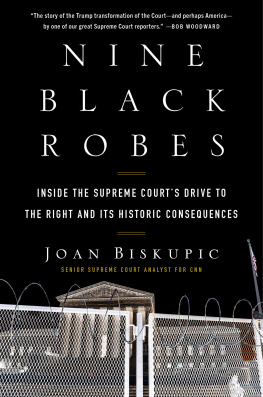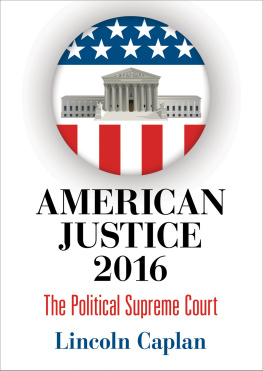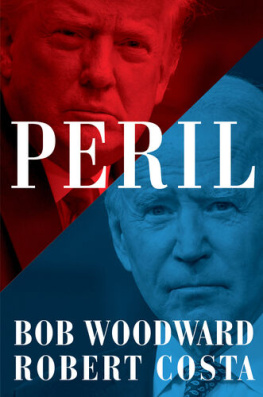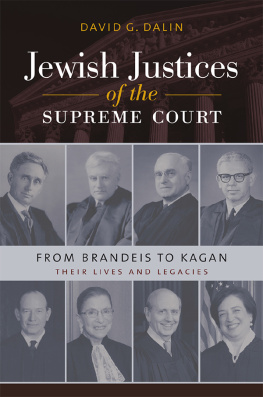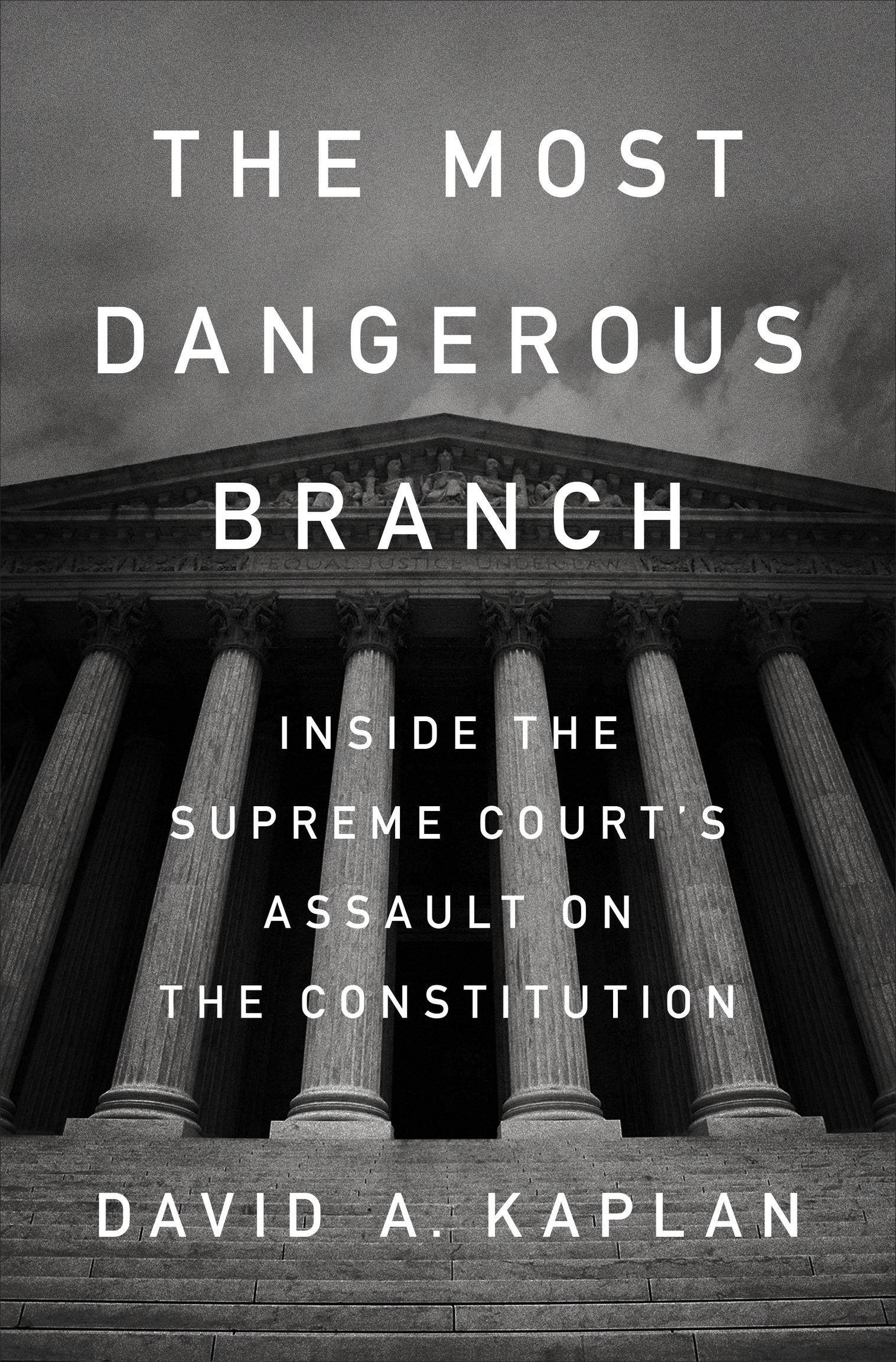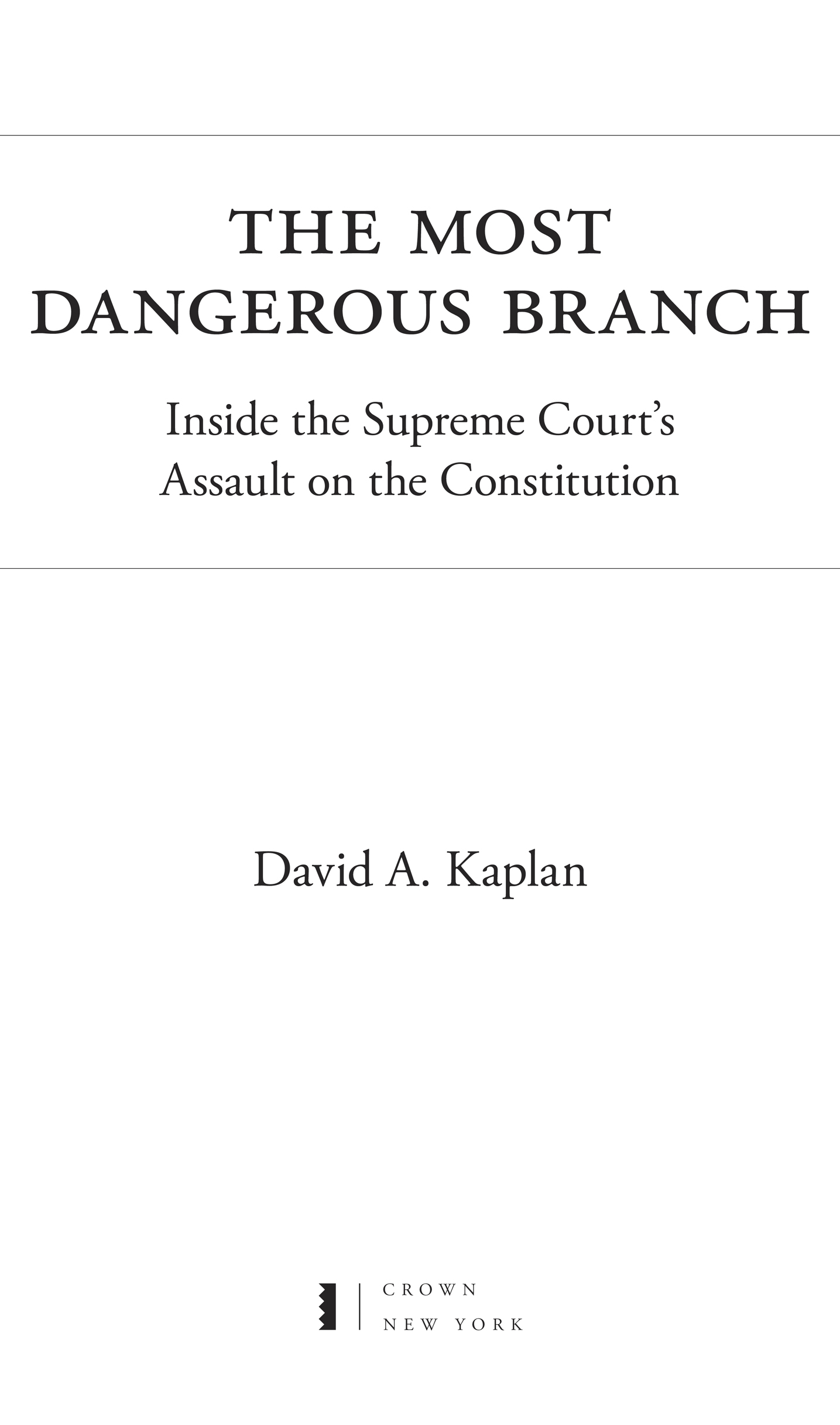ALSO BY DAVID A. KAPLAN
The Silicon Boys
The Accidental President:
How 413 Lawyers, 9 Supreme Court Justices, and 5,963,110 Floridians (Give or Take a Few) Landed George W. Bush in the White House
Mines Bigger:
The Extraordinary Tale of the Worlds Greatest Sailing Machine and the Silicon Valley Tycoon Who Built It
Copyright 2018 by David A. Kaplan
All rights reserved.
Published in the United States by Crown, an imprint of the Crown Publishing Group, a division of Penguin Random House LLC, New York.
crownpublishing.com
CROWN and the Crown colophon are registered trademarks of Penguin Random House LLC.
Library of Congress Cataloging-in-Publication Data
Names: Kaplan, David A., 1956 author.
Title: The most dangerous branch : inside the Supreme Courts assault on the Constitution / David A. Kaplan.
Description: New York : Crown, 2018. | Includes bibliographical references and index.
Identifiers: LCCN 2018004533 | ISBN 9781524759902 (hardback)
Subjects: LCSH: Judicial corruptionUnited States. | Judicial ethicsUnited States. | Political questions and judicial powerUnited States. | United States. Supreme CourtOfficials and employees. | Constitutional lawUnited States. | BISAC: POLITICAL SCIENCE / Government / Judicial Branch. | LAW / Courts. | LAW / Constitutional.
Classification: LCC KF8779.K37 2018 | DDC 347.73/26dc23
LC record available at https://lccn.loc.gov/2018004533
ISBN9781524759902
Ebook ISBN9781524759926
Cover design by Eric White
Cover photograph: Bluestocking/E+/Getty Images
v5.3.2
ep
In memory of my grandfather, Adolph Fox (18871980)
Whoever attentively considers the different departments of power must perceive that in a government in which they are separated from each other, the judiciarywill always be the least dangerous to the political rights of the Constitution.The Executive not only dispenses the honors, but holds the sword. The legislature not only commands the purse, but prescribes the rules.The judiciary may truly be said to have neither force nor will, but merely judgment.
Alexander Hamilton, Federalist No. 78 (1788)
If you have five votes here, you can do anything.
Justice William J. Brennan Jr. (many times, typically while brandishing a wide wry smile and the fingers on his left hand)
CONTENTS
INTRODUCTION
THE END OF THE WORLD AS THEY KNEW IT
On June 27, 2018, the bedrock of the national government trembled.
Soon before noon, after the Supreme Court in Washington issued its last two rulings of the 201718 term, Justice Anthony M. Kennedy arose from the bench, turned away from the audience, and left as always through the private exit in the back of the great courtroom. After three decades, it would be the last time he did so. He walked down the hallway to his resplendent chambers, reviewed the one-page letter he had considered drafting all year, and then proceeded with his bodyguards to a waiting SUV that would take him two miles down Constitution Avenue to the Oval Office. Kennedy apprised the other justices of what he was doing only minutes before he headed out the door. Almost nobody at the White House knew he was coming.
There, Kennedy was hurriedly escorted through a side entrance, down a little-used corridor, and brought to the upstairs residence, the better not to be seen by the press elsewhere in the building. The president, Donald Trump, had just been informed that a justice was on his way to see him. Kennedys name wasnt on the morning schedule and Trump had only surmised it was him, given the rumors about Kennedys remaining time on the Court. No student of the Court, let alone American history, Trump could not have known how unusual it was for a justice to show up unannouncedand to do what Kennedy was about to do. Yet such a stunt was altogether Kennedyesque. Other justices declared they were retiring by having a law clerk deliver a letter to the White House. The matter-of-fact David H. Souter sent in his retirement by fax. With Kennedy, there was little wonder that he didnt arrive in an ermine-trimmed cloak.
Kennedy, 81, brought with him the letter, which he handed to Trump. My dear Mr. President, Kennedy wrote. Please permit me by this letter to express my profound gratitude for having had the privilege to seek in each case how best to know, interpret, and defend the Constitution and the laws that must always conform to its mandates and promises. He modestly left out that in a lot of those cases he was the key vote. Sometimes he was with the four liberal justices; often he was with the four most conservative justices.
He wrote the 2015 ruling that made same-sex marriage a constitutional right, and he had been the Courts voice for gay rights for a generation. He voted to uphold Roe v. Wade, the 1973 decision that had blocked states from banning abortion. In the last decade alone, he joined with the liberals more than 50 times to make a narrow majority. But he also was the vote that broadened gun rights under the Second Amendment, gutted the Voting Rights Act of 1965, and cut back on campaign finance limits. As the swing justice, truly in the middle, Kennedy effectively was the Court. His power had nothing to do with the wisdom of his views or his skill at attracting alliesonly that he lucked out being the fulcrum.
The president recognized he was getting the opportunity to remake the Courtand to push it decisively to the right. His nomination of Neil M. Gorsuch the year before, to succeed Justice Antonin Scalia, netted nothing: It was mostly a one-for-one ideological swap of conservatives. Kennedys departure represented something else entirely. Replacing him with a diehard conservative meant 5-to-4 decisions that occasionally tilted leftlike preserving abortion rights, creating gay rights, allowing affirmative action, restricting capital punishment, and maintaining the authority of federal agencies like the EPA and the SECcould go in the opposite direction. For movement conservatives, mostly Republicans, reversing Roe had been the great grail. For nearly half a century, one justice after anotherSandra Day OConnor, David Souter, Anthony Kennedyhad foiled the Republican presidents who appointed them, by failing to abandon Roe. That now seemed within reach. For liberals, it was the end of the world as they knew it at the Supreme Court.
Trump and Kennedy made small talk for half an hour. The president asked if Kennedy had certain people that he had great respect for who potentially could take his seata very hard seat to fill, as Trump subsequently described it. Given that two of Kennedys former law clerks were strong contenders to replace him, Kennedy was understandably noncommittal.
That evening, the president could hardly contain his glee at the opportunity Kennedy had handed him: a second Court appointment in his first 18 months in office; another trophy to flaunt to his base; the chance to turn the Court into the most radical in modern history. Kennedys retirement, one commentator wrote, was the most consequential event in American jurisprudence at least since Bush v. Gore in 2000 and probably since Roe. At a rally in North Dakota, Trump described Kennedy as a very special guy and praised his great legacyeven though Kennedys jurisprudence, on such matters as abortion, was frequently anathema to the extremist views of Trumps supporters. But the most important part of Kennedys legacy, of course, was that he chose to skip town for good while Trump was in office, and to do so before the midterm elections that might end GOP control of the Senate. For, as Trump had explained at the rally, only hed name a justice who wouldnt erase your borders, throw open the jailhouse doors and destroy your freedomsand a justice who could serve 40 years, 45 years! He apparently believed his nominee might be barely 40, or might live to 100. Chanting USA! USA! the crowd of 6,000 went wild.


